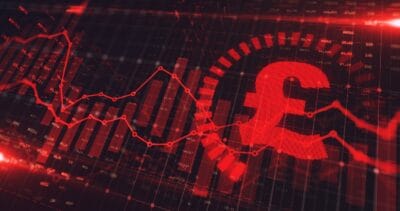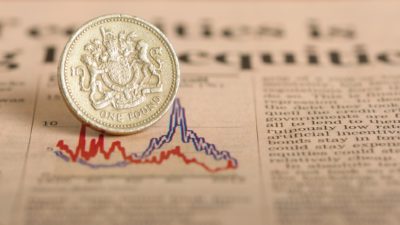September has not been a particularly fun month for most investors in US shares as the stock market seemingly started to crash. Some shares were down in double-digits, although a full-on crash hasn’t happened yet. While 2021 has seen an explosive performance, towards the end of last month, the market took quite a tumble after treasury yields breached the 1.5% level. Consequently, the S&P 500 fell by nearly 5% in a matter of days, as many leading growth stocks fell off a cliff.
While unpleasant to watch, this negative performance isn’t really a stock market crash, as many have come to call it. But rather a fairly common market correction. At least, that’s how it looks like at the moment. So, what caused treasury yields to rise? And what does that have to do with stocks anyway?
Investigating the signs of a stock market crash
In 2020, US Federal Reserve ramped up quantitative easing to keep money flowing through the US economy when Covid-19 was busy disrupting everything. This is actually quite a complex process. But in oversimplified terms, the Federal Reserve started buying up large chunks of government bonds, which in turn pushed down yields. As a result, interest rates fell and made debt far more accessible and affordable for businesses that desperately needed it during the pandemic.
In total, this latest quantitative easing plan has resulted in about $4trn of debt being bought up over the past 18 months. However, in September, it announced that it would slowly reduce its bond-buying activities to zero by mid-2022. With less money flowing into the bond market, yields are set to rise along with interest rates. But why did the stock market drop because of something happening in the bond market?

The link between bonds and stocks
Bond and stocks are very different in terms of investment instruments. But both are linked to an underlying business and can have an influence on its performance, especially when it comes to raising capital.
In the case of this most recent stock market correction, the rising treasury yields along with expectations of higher interest rates in 2022 have made debt more expensive for businesses. In other words, the interest bill on outstanding loans is about to get bigger, which naturally will impact net profit margins.
Furthermore, as bond yields go up, they become a more attractive investment opportunity. Therefore, performance expectations from equity investors start to rise. After all, if they’re going to take on more risk, they expect higher returns. The technical terminology for this is called the Cost of Equity. And as it climbs, the valuation of businesses suffers, especially when a stock price is already very high. That’s why technology stocks, despite most having very little debt, saw double-digit declines in September.
What does this mean for my portfolio?
In recent weeks, I’ve seen a considerable decline in my portfolio. But while this is undoubtedly horrible to watch, I’m not overly concerned. High-quality businesses with smart leadership and strong competitive advantages should be more than capable of adapting to evolving economic environments. That’s why I only buy shares in these types of companies.
Therefore, I’m doubtful that a slight increase in interest rates will be responsible for the next stock market crash. And as a long-term investor, this decline just looks like a buying opportunity for my portfolio.








